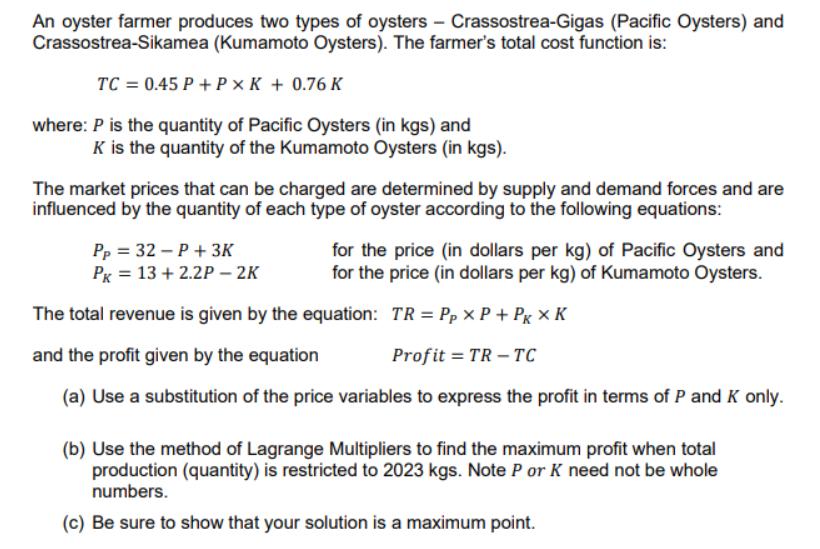Answered step by step
Verified Expert Solution
Question
1 Approved Answer
An oyster farmer produces two types of oysters - Crassostrea-Gigas (Pacific Oysters) and Crassostrea-Sikamea (Kumamoto Oysters). The farmer's total cost function is: TC =

An oyster farmer produces two types of oysters - Crassostrea-Gigas (Pacific Oysters) and Crassostrea-Sikamea (Kumamoto Oysters). The farmer's total cost function is: TC = 0.45 P+P XK + 0.76 K where: P is the quantity of Pacific Oysters (in kgs) and K is the quantity of the Kumamoto Oysters (in kgs). The market prices that can be charged are determined by supply and demand forces and are influenced by the quantity of each type of oyster according to the following equations: Pp=32-P+3K Pk 13+ 2.2P-2K for the price (in dollars per kg) of Pacific Oysters and for the price (in dollars per kg) of Kumamoto Oysters. The total revenue is given by the equation: TR = Pp P + Pk K and the profit given by the equation Profit TR-TC (a) Use a substitution of the price variables to express the profit in terms of P and K only. (b) Use the method of Lagrange Multipliers to find the maximum profit when total production (quantity) is restricted to 2023 kgs. Note P or K need not be whole numbers. (c) Be sure to show that your solution is a maximum point.
Step by Step Solution
There are 3 Steps involved in it
Step: 1

Get Instant Access to Expert-Tailored Solutions
See step-by-step solutions with expert insights and AI powered tools for academic success
Step: 2

Step: 3

Ace Your Homework with AI
Get the answers you need in no time with our AI-driven, step-by-step assistance
Get Started


